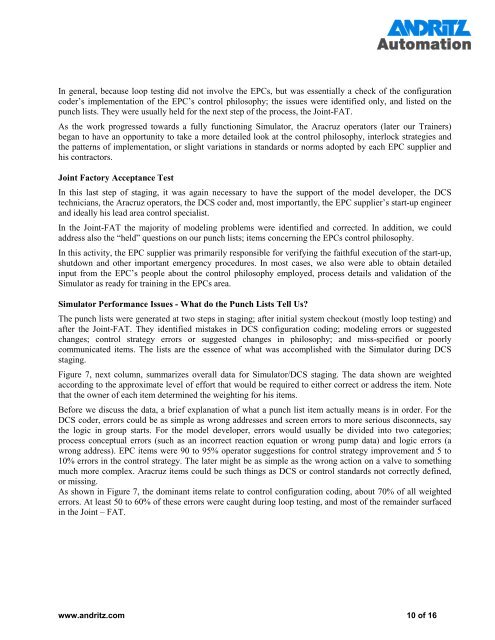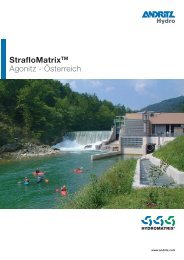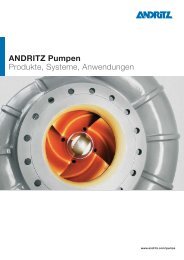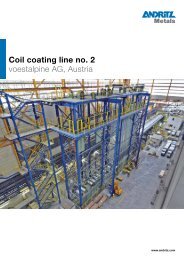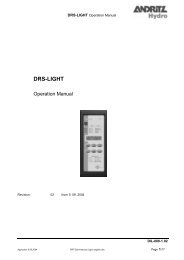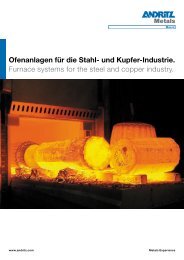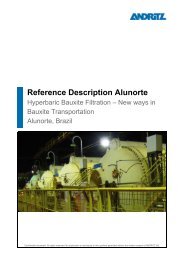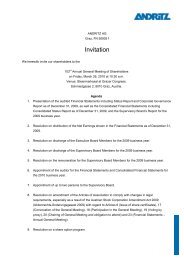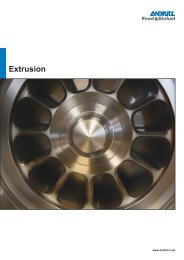Aracruz Uses a Dynamic Simulator for Control System ... - Andritz
Aracruz Uses a Dynamic Simulator for Control System ... - Andritz
Aracruz Uses a Dynamic Simulator for Control System ... - Andritz
Create successful ePaper yourself
Turn your PDF publications into a flip-book with our unique Google optimized e-Paper software.
In general, because loop testing did not involve the EPCs, but was essentially a check of the configuration<br />
coder’s implementation of the EPC’s control philosophy; the issues were identified only, and listed on the<br />
punch lists. They were usually held <strong>for</strong> the next step of the process, the Joint-FAT.<br />
As the work progressed towards a fully functioning <strong>Simulator</strong>, the <strong>Aracruz</strong> operators (later our Trainers)<br />
began to have an opportunity to take a more detailed look at the control philosophy, interlock strategies and<br />
the patterns of implementation, or slight variations in standards or norms adopted by each EPC supplier and<br />
his contractors.<br />
Joint Factory Acceptance Test<br />
In this last step of staging, it was again necessary to have the support of the model developer, the DCS<br />
technicians, the <strong>Aracruz</strong> operators, the DCS coder and, most importantly, the EPC supplier’s start-up engineer<br />
and ideally his lead area control specialist.<br />
In the Joint-FAT the majority of modeling problems were identified and corrected. In addition, we could<br />
address also the “held” questions on our punch lists; items concerning the EPCs control philosophy.<br />
In this activity, the EPC supplier was primarily responsible <strong>for</strong> verifying the faithful execution of the start-up,<br />
shutdown and other important emergency procedures. In most cases, we also were able to obtain detailed<br />
input from the EPC’s people about the control philosophy employed, process details and validation of the<br />
<strong>Simulator</strong> as ready <strong>for</strong> training in the EPCs area.<br />
<strong>Simulator</strong> Per<strong>for</strong>mance Issues - What do the Punch Lists Tell Us?<br />
The punch lists were generated at two steps in staging; after initial system checkout (mostly loop testing) and<br />
after the Joint-FAT. They identified mistakes in DCS configuration coding; modeling errors or suggested<br />
changes; control strategy errors or suggested changes in philosophy; and miss-specified or poorly<br />
communicated items. The lists are the essence of what was accomplished with the <strong>Simulator</strong> during DCS<br />
staging.<br />
Figure 7, next column, summarizes overall data <strong>for</strong> <strong>Simulator</strong>/DCS staging. The data shown are weighted<br />
according to the approximate level of ef<strong>for</strong>t that would be required to either correct or address the item. Note<br />
that the owner of each item determined the weighting <strong>for</strong> his items.<br />
Be<strong>for</strong>e we discuss the data, a brief explanation of what a punch list item actually means is in order. For the<br />
DCS coder, errors could be as simple as wrong addresses and screen errors to more serious disconnects, say<br />
the logic in group starts. For the model developer, errors would usually be divided into two categories;<br />
process conceptual errors (such as an incorrect reaction equation or wrong pump data) and logic errors (a<br />
wrong address). EPC items were 90 to 95% operator suggestions <strong>for</strong> control strategy improvement and 5 to<br />
10% errors in the control strategy. The later might be as simple as the wrong action on a valve to something<br />
much more complex. <strong>Aracruz</strong> items could be such things as DCS or control standards not correctly defined,<br />
or missing.<br />
As shown in Figure 7, the dominant items relate to control configuration coding, about 70% of all weighted<br />
errors. At least 50 to 60% of these errors were caught during loop testing, and most of the remainder surfaced<br />
in the Joint – FAT.<br />
www.andritz.com 10 of 16


